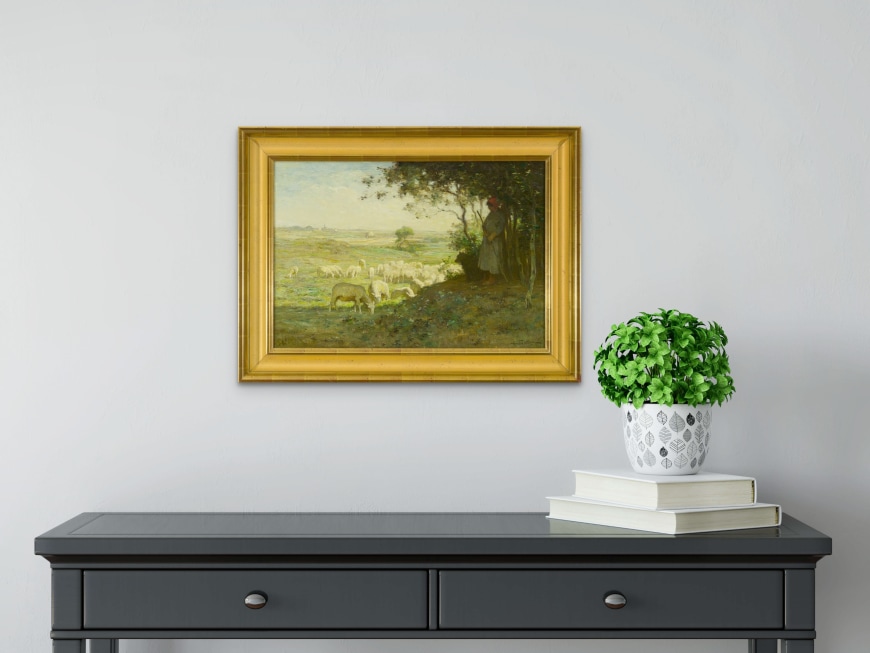-
Œuvres d'art
Horatio WalkerLandscape with Sheep1858-1938Oil on canvas18 x 26 inThis painting is presently on view at our Montreal gallery
45.7 x 66 cm$15,000Inscriptions
signed, ‘Horatio Walker’ (lower right)Provenance
Laing Galleries, Toronto
Private collection, New York
Sotheby’s / Ritchies, Important Canadian Art, November 21, 2005, lot 70
Galerie Walter Klinkhoff Inc., Montreal
Property of a Distinguished Montreal Collector
One too often reads or hears that one or another artist is not “fashionable” today and that one is best served to buy what is fashionable.
Diek Grœnewald, deputy director of Daxer & Marschall in Munich says : “There are always evolutions in tastes and fashions. But a distinction needs to be made between taste and quality. There’ll always be a market for works of superior workmanship. Tastes change but not quality. It’s the intermediary market which evolves, not the upper end segment. ”
What this implies are a number of things. First and foremost, if one looks at the accolades and distinctions awarded to Horatio Walker in his day and the collectors and museums that endorsed the quality and relevance of his painting to his generation, the “quality” of his painting is indisputable. Fine Horatio Walker paintings were collected by a number of museums in the United States. Interestingly, in his lifetime, a brief review of the exhibitions in which his paintings were included, we are inclined to speculate that his exposure in Canadian, and American museum exhibitions as well as in those in Western Europe and the United Kingdom likely exceeds that enjoyed by any other Canadian artist of his day. The list includes the 1893 World's Columbian Exposition, Chicago; the 1924 British Empire Exhibition, Wembley; the 1925 International Exposition, Ghent; the 1930 International Biennial Exhibition, Venice; the Carnegie Institute, Pittsburgh; the Musée du Jeu de Paume in Paris; the St. Louis City Art Museum, St. Louis; the Metropolitan Museum, New York; the National Gallery of Canada, Ottawa; the Buffalo Pan-American Exposition, Buffalo; the Vancouver Art Gallery, Vancouver; the Smithsonian Institution, Washington; the Albright Art Gallery, Buffalo; the Montreal Museum of Fine Arts, Montreal; the Art Gallery of Ontario, Toronto; the National Academy of Design, New York; the Cincinnati Art Museum; the Montross Gallery, New York; the Royal Academy, London. We reiterate that the enormity of the exposure in these distinguished institutions would endorse the statement that his paintings are of “quality”.
Secondly, an obvious takeaway is that it would be erroneous for a collector/investor to assume that the purchase today at a substantial price of a work that is fashionable and in accordance with contemporary taste today will always be fashionable and therefore increasingly costly. If one accepts that fashions and tastes change, what is fashionable today, will be out of fashion in due course. Fundamentally, what is of the utmost importance is whether the work is of “quality”. That asset is timeless.













